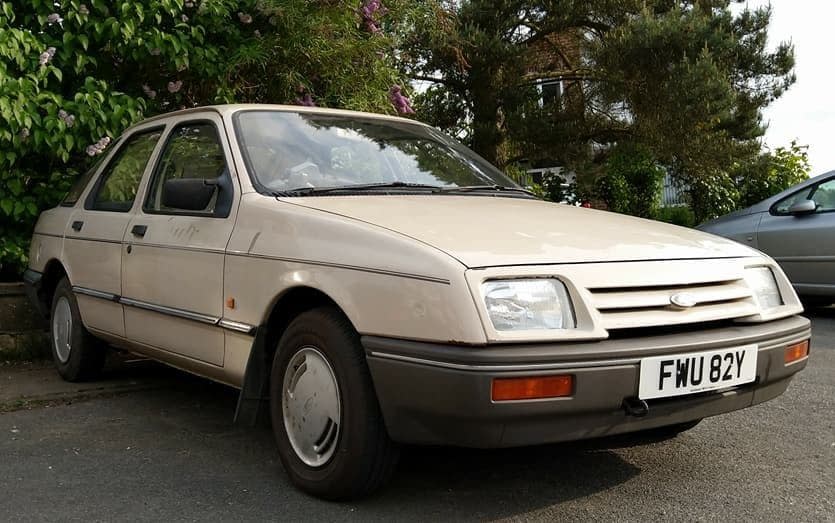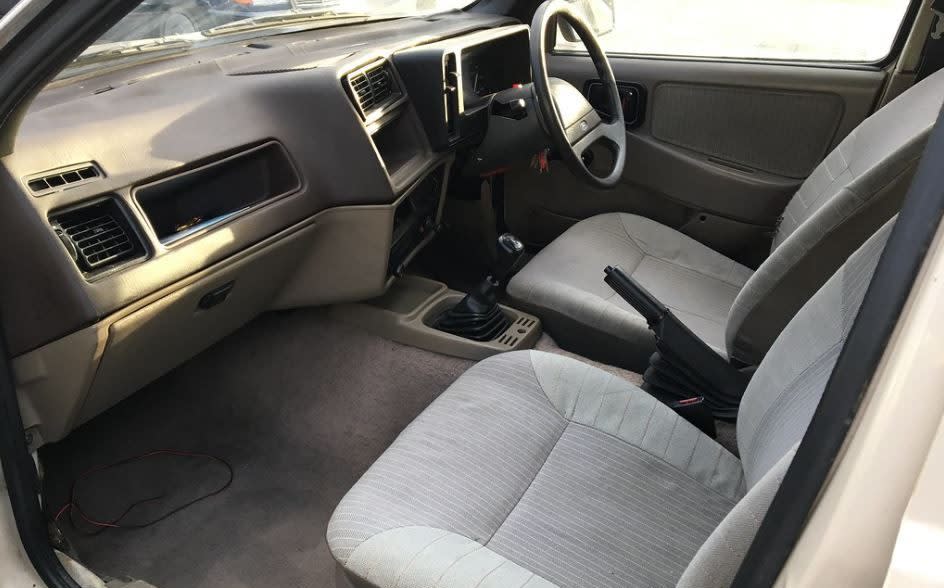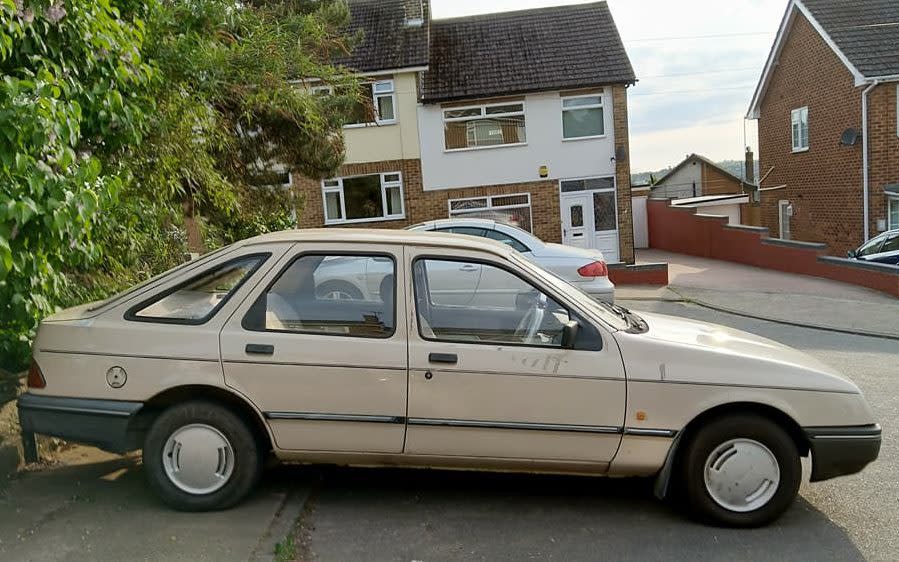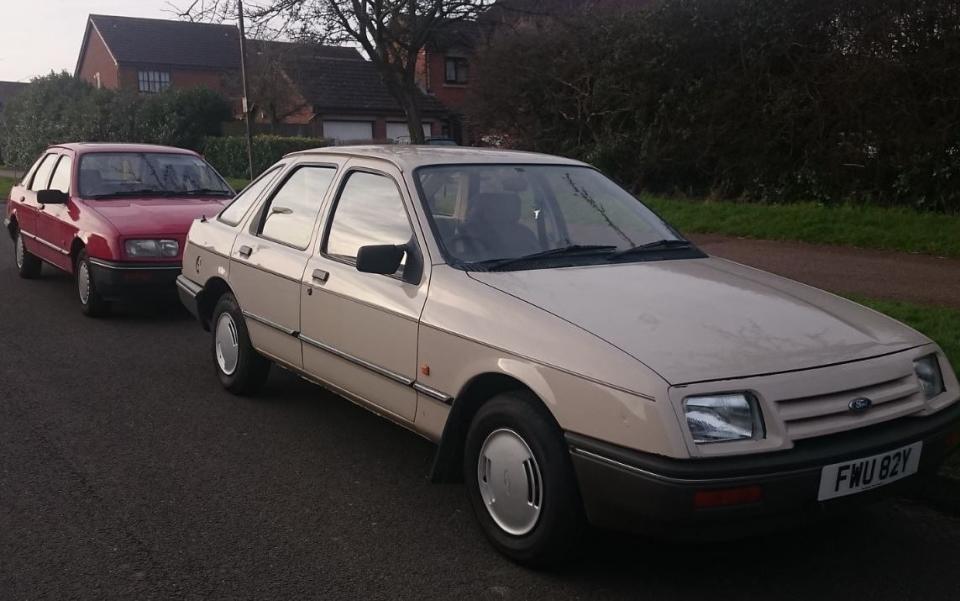The beloved Ford Cortina’s controversial replacement: the Sierra at 40

In 1981 Ford announced the imminent demise of the Cortina Mk5 and that its replacement was not only a hatchback, but it would also dispense with the famous brand name that had been a consistent best-seller since 1962.
The idea of the new Sierra hoping to succeed one of the country’s most popular car names provoked alarm and consternation, even with the promise of a low drag coefficient of 0.34. Fortunately, it became the 10th most popular car sold in the UK, and Sean Greenwood’s 1982 1.6L is as representative of early 1980s life as unwisely adopting a Duran Duran hairstyle
The company had commenced the £660 million “Project Toni” in 1978 and the resulting Sierra debuted on 22 September 1982. Accompanying the launch was a television commercial with a wonderfully over-the-top voiceover promising “Man and machine in perfect harmony”.
Motor Sport wrote “what a very fine family-bus this is”, while the October 1982 edition of Car proclaimed “SIERRA SHOCK! It really is a good car”. Ford at Dagenham’s publicity heavily emphasised the Ghia flagship with its quad headlights, electric windows and central locking.
Such a magnificent vehicle could only inspire a junior sales executive to work harder to gain the keys to a Ford with plush “Chatsworth” upholstery. Meanwhile, this distinctly downmarket 1.6L example came with a radio, locking fuel cap, clock, front head restraints, a cigar lighter and split rear seats, which at least differentiated it from the social death of driving the Base model.

The price of the 1.6L was £5,552, £10 less than the equivalent Vauxhall Cavalier Mk2 1.6L (which had front-wheel drive, while Ford persisted with a Cortina-based rear-wheel drive layout), and on 6 November this paper noted that the Sierra was already the country’s eighth best-selling car.
However, Autocar believed the main challenge was “whether it would prove a worthy successor to the extremely popular Cortina, which sold well in spite of – or perhaps because of – its ageing but conventional layout”.
Aside from its independent rear suspension, there was little in the new Ford’s engineering to surprise the average British motorist, but too many potential buyers muttered the dread term “jelly mould” in reaction to its aerodynamic lines. The BBC Arena documentary The Private Life of the Ford Cortina guest-starred Alexei Sayle as a travelling salesman who lamented: “They are doing away our car for a poxy hatchback – I’m angry.”
A further problem was that Ford dealers offered heavily discounted examples of the Sierra’s predecessor on the same forecourt. The average fleet buyer also preferred a separate boot rather than a hatchback, and Vauxhall wisely marketed a conventional Cavalier saloon in addition to the five-door versions.

However, when the Mondeo “global car” replaced the Sierra in 1992, British registrations had reached 1,299,993 – but today only 2,946 are believed to remain on the road.
Sean Greenwood’s Sierra is one of the earliest survivors. He says: “The build date was 27 September 1982 and sales began on 16 October. My car wasn’t registered until February 1983, as it spent some time ping-ponging between two dealerships.”
Greenwood acquired his 1.6L for, as he puts it, “the wear and tear of regular driving, which it has taken like a champ. It is reasonably dynamic on twisty roads and will keep up with modern traffic, too – proving said traffic is made up of three-cylinder econoboxes.
“It features the ‘launch specification’, which includes the radical features of the original design, which were binned as early as six months into production, including pendulum mirrors, aero wheel covers and a ‘strakeless’ C-pillar. Ford later added strakes following the panic over crosswind stability issues, but mine never got them.”

Another attraction for the 1.6 for Greenwood is that ultra-beige paint finish, and he notes, “firstly, it shines beautifully in the sun and secondly, I believe all dealer stock Sierras from the launch were painted in this colour. My Ford is ‘the Salesmen’s Spaceship’ and a reminder that your office’s fleet manager wasn’t prepared to pay out for the five-speed gearbox you saw in the adverts”.
Above all, Greenwood is a devotee of the early Sierra, which he refers to as “that combination of old technology and new ideas for design. It is the idea that a ‘Car of the Future’ can feature sculpted bodywork, ‘honed by the wind’, with recessed headlights and aero wheels while retaining a [by then old-fashioned] brown interior and only a four-speed gearbox”.
Alternatively, the beige 1.6L is a prime example of “Man and Machine in Perfect Harmony” as the launch advertising put it, even after four decades.
Thanks to: Sean Greenwood
For new and used buying guides, tips and expert advice, visit our Advice section, or sign up to our newsletter here
To talk all things motoring with the Telegraph Cars team join the Telegraph Motoring Club Facebook group here

 Yahoo Finance
Yahoo Finance 